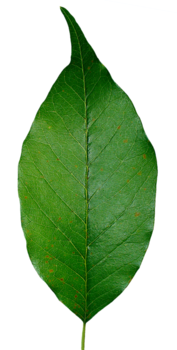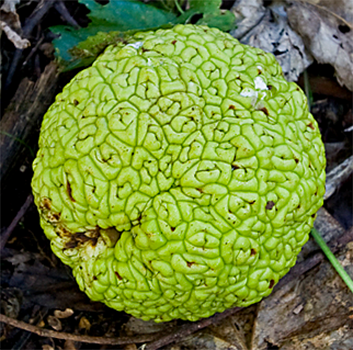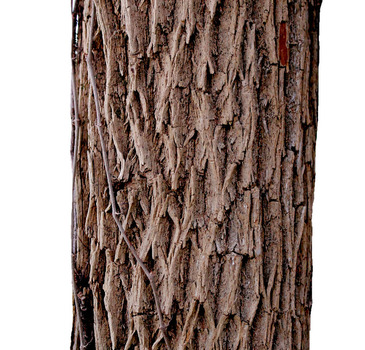Osage Orange
Classification:
Family: Moraceae, mulberry family
Genus, species: Maclura pomifera
Leaves:
Leaves are simple, long oval shape terminating in a slender point.
Bark:
Bark is deeply furrowed, scaly, pale orange-brown.
Flowers:
Tree is dioecious, produces male and female flowers on separate trees.
Fruit:
Fruit is also known as a "hedge-apple." Fruit is a large globe, 5 inches in diameter, made up of numerous smaller fruits, filled with milky latex-based juice. Fruit is not poisonous but is mostly inedible due to hard texture and taste.
Common Uses and Interesting Facts:
Wood was used by American Indians to make bows. Trees were commonly planted to create windbreaks and fences in prairie states. Wood is very dense and is used for tool handles and fence posts. A yellow-orange dye can be extracted from the wood. When dried, the wood has the highest energy content of any North American wood, and burns long and hot.
More Information:
The genus name Maclura is named in honor of William Maclure, a Scottish-born American geologist. The species name pomifera means “fruit-bearing.” The common name “osage” is derived from Osage Indians from young plants were first obtained, as told in the notes of Meriwether Lewis in 1804. Also known as Hedge Apple.
Photos:Osage orange leaf

Osage orange fruit

Osage orange bark
